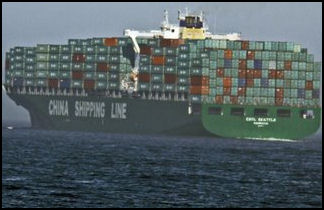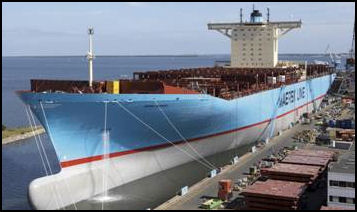JAPANESE INVESTMENT IN OTHER COUNTRIES
In the immediate postwar era, the involvement of Japanese businesses in overseas economies centered on the export of goods. In the 1980s, direct overseas investment by businesses began to grow. Among the reasons for this were the shift to overseas production due to trade friction, as in the case of the North American and European automobile markets; the shift to overseas production due to the strong yen, particularly electric and electronic goods manufacturers who moved to Southeast Asia and China in search of high-quality, low-cost labor; and the shift of production facilities to countries such as China in order to develop markets where there would be potential for major increases in demand. [Source: Web-Japan, Ministry of Foreign Affairs, Japan]
In the 1980s, a large part of Japan’s direct foreign investment went to North America and Europe. In the 1990s, the ratio of investment in Asia rose. According to international balance of payments trends from the Ministry of Finance and Bank of Japan, foreign investment stood at 13.23 trillion yen in 2008, up 52 percent from the previous fiscal year and the largest figure ever recorded. Measures aimed at encouraging investment in transportation, machinery, tools, and other areas of the manufacturing industry were largely responsible. Although Japanese businesses have been slow, in comparison with businesses in the United States, to become multinational enterprises, the move towards globalization continues.
Many wealthy Japanese keep their money and overseas earnings overseas to avoid paying taxes in Japan. There has been some discussion of creating tax exemptions so the money will return to Japan so it can be invested and put to use in research and development.
Japan Tops China in 2011 as a Source of Direct Foreign Investment
In April 2012, Jiji Press reported: “Japan's foreign direct investment in 2011 more than doubled from the previous year to 115.6 billion dollars, surpassing China, according to a report by the U.N. Conference on Trade and Development released. Japan was the second-largest provider of outward foreign direct investment behind the United States. This came after the nation plunged to seventh place in 2010, falling behind China for the first time, which rose to fifth place with a 20.3 percent year-on-year increase. [Source: Jiji Press, April 14, 2012]
“Japan's rebound in the ranking for 2011 was attributed to an increase in mergers and acquisitions by Japanese companies backed by a strong yen. The United States remained on top, with 383.8 billion dollars, up 16.7 percent from the previous year. France came in third with 106.6 billion dollars, up 26.7 percent. The overall amount of foreign direct investment in the world grew 16.5 percent to 1.66 trillion dollars, the UNCTAD said.
Japanese Companies Abroad
Many Japanese manufacturers — especially those that need cheap labor to keep their cost down — have been moving their factories overseas, namely to China, and buying more high-quality foreign parts that are significantly cheaper than those made in Japan . Production cost in Japan are among the highest in the world. The Japanese companies keep production at home are those that utilize a labor force with specialized skills.
The trend towards overseas production has been occurring for some time. In the 1970s and 80s the Japanese established production facilities in the United States and Europe and helped create jobs there. In the 1990s, Japan imported 2½ times more televisions than it examples. Most were assembles at plant in Southeast Asia. Now it is hard to find a product sold in Japan or made by a Japanese company that isn’t made or has parts made in China.
In the 1980s, Japanese executives who worked abroad were sometimes accused of being “bata-kusai” (stinking of butter) but now overseas experience is critical for advancement.
Japan used to send a lot of people to the United States to pick up trade and business secrets by visiting plants and talking to professionals and business leaders. One occasion they sent intelligence people posing as television crews to gather information.
Japanese Business within China

There are 20,000 Japanese companies operating in China (2006). Japanese companies have their largest presence in Shanghai. They are the No. 1 foreign contingent in Shanghai. Between 2001 and 2005, 5,664 Japanese businesses were set up in Shanghai. Seventy percent of them are manufacturers. 40,000 of the 90,000 residential foreigners in Shanghai are Japanese. There are lots of Japanese restaurants and schools to meet their needs.
China is the No.1 destination for Japanese foreign investment. Japanese have invested $65 billion in China since the 1980s. Japanese firms employ more than 1 million Chinese. Conditions at some of the factories that make stuff for Japanese companies are pretty bad.
Japan supplies China with steel, chips, and electronic items. Among the Japanese products that are available in China are Honda, Nissan and Toyota cars, Asahi beer, Sony televisions and Casio, Sharp and Kyocera electronics. According to a 1995 Gallup poll, six of the top the foreign brads identified by consumers were Japanese. The four best known brands — Hitachi, Toshiba, Toyota and Panasonic — also had the highest product quality ratings.
Japan has been more reluctant transfer technology of China than the U.S. because it is worried about China as a potential competitor in the future.
Japan and China have had their share of trade battles. In 2001, after conservative farming interests in Japan persuaded the government there to restrict imports of leeks, mushrooms and tatami mat rushes, China responded with high duties on Japanese cars, computers and cell phones. The dispute took nine months to work out.
See China, Economics, Business, Trade
Japanese Companies in Asia, Africa and the Middle East
world's largest container ship See Asia, Southeast Asia
Japan has not invested in the Middle East and in Muslim countries where Islamic financing is the norm because of complications involved in investing in a financial system with no interest payments and Muslim laws that create hard-to-decipher rules between different financial services.
Japanese trading companies are very active in Africa. Mitsui is developing oil fields in Mozambique, Ghana and Libya. Sumitomo is involved in nickel production in Madagascar. Mitsubishi is is engaged in coal gasification in South Africa and photovoltaic power generation in Ethiopia.
Japanese Companies Russia and East Europe
Panasonic built a state-of-the-art electronic factory in the Czech Republic. Sony built stereo and television plants in Slovakia and Hungary. Several Confucian car makers have plants in Russia and East Europe.
Major importers of Russian goods: Germany (11 percent), Britain (8.7 percent), the U.S. (7.9 percent), China (6.6 percent), Italy (6.4 percent), Japan (4.1 percent), the Netherlands (3.3 percent), and Switzerland (3.0 percent).
Major Russian exporters to Russia: Germany (17.5 percent), the U.S. (8.3 percent), the Netherlands (6.2 percent), Finland (5.6 percent), Italy (4.5 percent), Japan (4.5 percent), France (4.0 percent) and China (3.9 percent).
Japanese Companies in the United States
Hundreds of thousands of jobs in America are now tied to Japanese companies. Japanese money and knowhow revived dying factory towns like Columbus, Georgia, now the second largest producer of cotton yards in the U.S..
By the1990s Sony had set up large research and production facilities in the United States and exported $1 billion worth of U.S.-made goods.
See Economics, Industry, Toyota, Honda, Nissan
Foreign Companies and Investors in Japan
Foreign companies have traditionally had difficulty penetrating Japanese markets because of “keiretsu” (cartels), red tape, high tariffs and the arcaneness of the Japanese distribution system and its use of inefficient middlemen. Among those that have tried to enter the Japanese market are the Abu Dhabi government, which bought a large stake in Cosmo Oil and Wal-Mart which purchases a large stake of Seiyu department stores.
During the period of stagnation in the 1990s and early 2000s foreign investors began finding bargains in Japan and the government stepped up efforts to attract foreign investment which had not been needed in the past. Th Japanese government overhauled the commercial code to make it easier for foreign firms to buy Japanese ones and set up a bureaucracy to court foreign investors.
As of 2002, the percentage of sales from foreign firms in Japan was around three percent for manufacturing and one percent for services. In many ways the reason for this lies with foreign companies who often find that doing business and investing in Japan often involves too much work and too little profit.
Japan should be wooing foreign investors to restructure its service, retail and energy industries. In many cases Japan is not so much interested in the money as it is in the ideas and expertise that foreign companies offer.
Image Sources: 1) Reuters 2) University of Washington 3) 5) NY nerd blog 4) China shipping 6) Toyota
Text Sources: New York Times, Washington Post, Los Angeles Times, Daily Yomiuri, Times of London, Japan National Tourist Organization (JNTO), National Geographic, The New Yorker, Time, Newsweek, Reuters, AP, Lonely Planet Guides, Compton’s Encyclopedia and various books and other publications.
Last updated October 2012

